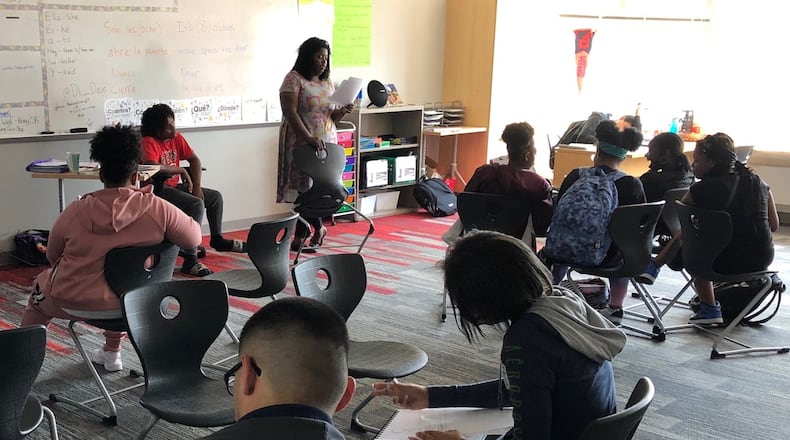Most Ohio students — about 1.5 million — attend traditional public schools. According to data from the Ohio Department of Education, about 162,000 students attend private schools in the state. About 116,000 more students are in charter schools, approximately 98,000 are in career centers and about 3,750 students are in STEM schools.
Some education experts recommend starting with ODE data that looks at charter school and public school effectiveness. Private schools aren’t rated by the state.
Of the available private schools in the Dayton area, a majority are run by the Catholic church. Jennifer Schack, spokeswoman for the Cincinnati Archdiocese, said Catholic schools in the area are searchable through the archdiocese’s website. From there, it’s important to ask individual schools questions that can help families determine what’s best for their children, she said.
ODE publishes an annual report on Ohio Community Schools, available on ODE’s website. The 2021-22 report is not yet available.
“The state’s school report card is a good place to start for parents. It’s accessible and provides impartial information about student outcomes,” said Aaron Churchill, the Ohio research director for the Fordham Institute, a pro-charter school think tank.
In 2020-2021, about 315 charter schools operated in Ohio, primarily in big cities like Columbus, Dayton and Cleveland, according to ODE. About 22 charters operated in Montgomery County that year. Two charters operated in Clark County in 2020-2021.
Parents should consider charters with a rating of “C” or higher, Churchill said, as those are higher quality and more effective schools, largely according to state testing metrics. Parents could also be on the lookout for schools receiving an “A” on the state’s “progress” rating, also known as “value-added.” Such a rating means that the school is effectively improving student learning, even if scores are low, he said.
Some families in Dayton Public, Northridge, Trotwood-Madison, Mad River, Jefferson Twp. and West Carrollton schools are eligible for an EdChoice scholarship, depending on which school the student goes to. EdChoice vouchers give families dollars to send their kids to a private school. People can also apply for an EdChoice scholarship if their income is at or below 250% of the poverty line, which is $54,900 in the 2021-22 school year for a family of three, according to ODE’s website.
Scott DiMauro, president of the Ohio Education Association, one of the state’s teacher unions, said public schools have a wider offering for students. The OEA is pro-public school and most of its members are public school teachers.
Parents of special needs kids should be especially wary of non-public schools, DiMauro said, because some of the legal requirements of public schools don’t apply to other types of schools.
“Local public schools are constantly working to innovate to make sure that we are creatively meeting the needs of all students,” he said. “In the case of charter schools that that accountability just doesn’t exist.”
Churchill said charter schools are there to offer parents more options for their kids.
“Having a plurality of quality choices — in addition to district options — can help families find the right fit for their child,” Churchill said.
DiMauro, a teacher for Worthington public schools, said charter school sponsors, who make sure the charter schools are running properly, don’t meet publicly. He argued that a recently passed Ohio law also weakens some of the accountability for charter schools.
Sponsors are evaluated on three areas: academics, best practices and compliance with the state. ODE had a mechanism prior to the new law that said if the sponsor got a zero on any of the three components, the best rating the sponsor can get is ineffective, the second lowest rating out of four. With the new system, that automatic mechanism is no longer in place.
The OEA and Innovation Ohio worked together on a website, knowyourcharter.com, that takes ODE data on public school grades and compares it to local charter school options for kids. Churchill said he was unaware of any similar resources from Fordham, but Fordham has plenty on the benefits of charter schools on its website.
About the Author

